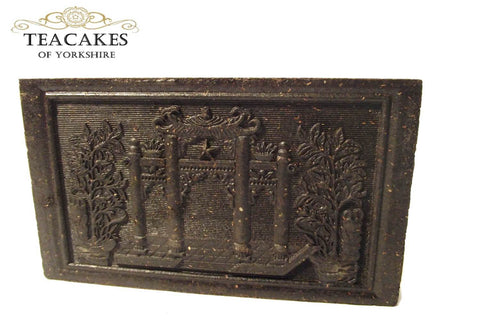Wonderfully rich with deep notes of earth, malt and gentle musk. A fabulous cup from one of Yunnan's top Pu-erh producers.
Production of pu-erh can be traced back to the Tang Dynasty (618-907). “The tea from scattered trees would be cooked with herbs and spices” While this form was certainly different from the Puerh cakes more commonly known in today's world, records indicate the same style of specialized leaf fermentation.
What exactly is Puerh? Among experts, this is a topic of fierce debate. Confusion stems from the fact that Puerh tea is named after Puerh City, one of Yunnan's old tea trading hubs.
Yunnan Province/China

Normally, most Chinese teas are named after the various leaf styles, towns or gardens where they were produced. At the zenith of Puerh City's dominance over the regional tea trade, all tea traded there was called Puerh no matter what the style or origin. To dispel the confusion, in 2003 the Bureau of Standard Measurement of Yunnan Province defined Puerh as “products fermented from green tea of big tea leaves picked within Yunnan province.” This in itself is still quite a broad definition, so we. 'll try to break it down for you.
There are two types of tea we in the West commonly know as Puerh. Raw Puerh (Sheng tea) and Ripe Puerh (Shou tea). The difference is in the aging process, Raw Puerhs are typically fermented very slowly by being stored in cellars and aged for up to 25 years. These teas, typically priced well out of the range of the average tea lover, usually reside in the collections of exceptionally wealthy Chinese tea aficionados – their presence on the international markets is incredibly rare. Raw Puerh vintages are characterized by warm tones of earth, damp moss and oak that shift and shape during the aging process.
On the other side of the coin is Ripe Puerh, processed according to a method developed at the Kunming tea factory in 1973. The Kunming factory devised the method to make Puerh teas available to ordinary tea drinkers in China. When making Ripe Puerh, the tea is fermented over a matter of weeks under heavy wet blankets. During fermentation, the tea develops characteristics very similar to that of aged Puerh. The leaf is then pressed into a cake-like form, wrapped, dated, and shipped to market.
Origin: China
Caffeine Guide: Medium
Region: Yunnan Province
Antioxidant Content: Medium
Growing Altitudes: 1500 - 4900 feet above sea level
Infusion Colour: Very dark
Grade: Pu-Erh
Aroma: Earthy typical of a Black Pu-erh mellows with age
Process: Black Pu-erh
Taste: Rich with deep notes of earth, malt and gentle musk

